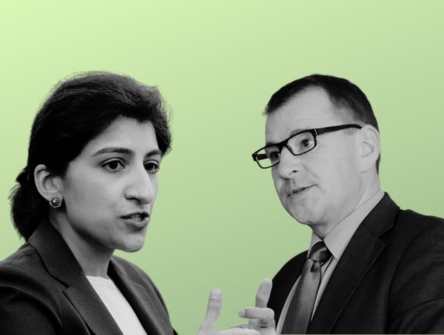Watching the SPAC rush from up North
Outside of some niche industries, special acquisition purpose companies have yet to gain real traction in Canada.

"If you don't have your own SPAC," said Peter Atwater, J.P. Morgan's former head of asset finance, "you're nobody."
By now, even the nobodies have heard about SPACs — special-purpose acquisition companies, the newest white-hot trend in investment. The space exploration firm Virgin Galactic Holdings Inc. went public through a SPAC in 2019. Former U.S. House of Representatives speaker Paul Ryan has one. So does Shaquille O'Neal.
Simply put, SPACs are blind pools of cash organized by groups of founders ("sponsors") and offered to the public through IPOs. Their function is to find companies to buy and take public. A SPAC is listed on an exchange after its IPO and its shares and warrants trade on the exchange before it makes its "qualifying" purchase of another company.
In a straight-up IPO process, a company looking to raise cash on a stock exchange has to file and clear a prospectus with regulators and hire an underwriter to sell shares. "In Canada, you're looking at a timeline of about six months," said Manoj Pundit, a securities partner at Borden Ladner Gervais LLP.
A SPAC is faster. SPACs line up their investors through their own IPOs before they find companies to target for purchase. Once a SPAC launches, it has a short time period — up to 36 months — in which to find a company to buy.
SPACs are often referred to as "blank cheque" companies because those investing in them don't know what they'll be buying. They're relying largely on the market wisdom of the sponsors to find the right company to take public, and to do so at the right price. Some SPACs launch with target sectors in mind — IT, for example. Some don't.
"It's a blind pool. Shareholders are basically betting on the credibility of the sponsor," said Pundit. "So if the sponsors make a poor choice, then of course the shares may go down in value."
SPACs haven't taken off in Canada the way they have in the States. "Things never get as crazy here as they do in the U.S.," says Simon Romano, a partner at Stikeman Elliott in Toronto. "People here tend to gamble less.
"I think SPACs were created to solve a niche problem — of giving regular investors a chance to play in the private equity world, the world of wealthy investors."
James Munro of McMillan LLP in Vancouver recently helped clients complete a SPAC focused on acquiring a U.S. cannabis firm.
"In Canada," he said. "SPACs tend to be focused on a particular industry or sector. The risk to the investor is mitigated when everyone knows in advance what they're getting into."
U.S.-based cannabis companies are popular targets for Canadian SPACs, he said, because the NEO exchange — a Canadian stock exchange with a SPAC program — permits listings of issuers with U.S. cannabis assets, while American stock exchanges do not.
"That gives SPACs listed on the NEO exchange a strategic advantage," he said.
SPACs promise non-institutional investors a shot at hot new stocks. "The companies that get targeted by SPACs tend to be ones that the ordinary investor can't normally reach," said Pundit. "When these companies go IPO, their shares tend to get snapped up by large institutional investors and well-connected friends."
But there are risks for the household investor with a mere $100,000 to spare. By doing an end-run around the IPO process, SPACs make do without an underwriter's scrutiny. "Shareholders are depending on the sponsors' reputation for diligence, their track record," said Pundit. "Other than the cash the SPAC raises in the IPO, the only asset the SPAC really has at the outset is the sponsor's credibility."
Some SPACs fall at the final hurdle — finding the right company to buy — said Norbert Knutel, a partner at Blake, Cassels & Graydon LLP in Toronto.
"For a SPAC, raising the money is usually the easy part. But then you have to put that money to work — you have to buy something," he said. "And that's not always as easy as it sounds.
"I think that in a lot of early SPACs, expectations didn't match reality. People thought completing a de-SPAC would be easier than it really is," Knutel says about the transaction that takes place after a target company has been identified to merge with the buyer. "It's not a typical M&A deal, as a SPAC has its own features and idiosyncrasies. I think the industry understands the model better now and is better situated going forward."
And because SPAC sponsors are on a deadline, said Pundit, "they're under pressure. And yes, that means they may not make a deal under the best possible terms."
There are also risks for the companies sought by SPACs for purchase. Shareholders in these "operating companies" may see their stakes diminish in value if the SPAC's shares are overvalued (which is the sort of thing that can happen if the SPACs sponsors are the kind of high-profile investors who tend to attract market hype). Because SPACs don't go through the market canvas process required for an IPO, setting a value for the operating company can be tricky.
SPAC investors do enjoy a redemption right: when a SPAC announces its proposed qualifying purchase, shareholders have the option to redeem their shares for the original IPO price, plus interest, if they don't like the look of the deal. That protects them during the pre-acquisition phase.
They can also sell shares in the SPAC post-IPO while hanging on to the warrants, which gives them the option of buying shares at a set price in the future. Forbes reported recently that regulators in the U.S. are considering changing the classification of some warrants on balance sheets from equity to liability, depending on their terms — news that's reportedly casting a chill on the U.S. SPAC market already.
So, caveat emptor — SPACs aren't for everyone. "It helps to have some knowledge of the sector you're going into," said Pundit. "But there's a fair bit of blind trust involved."


